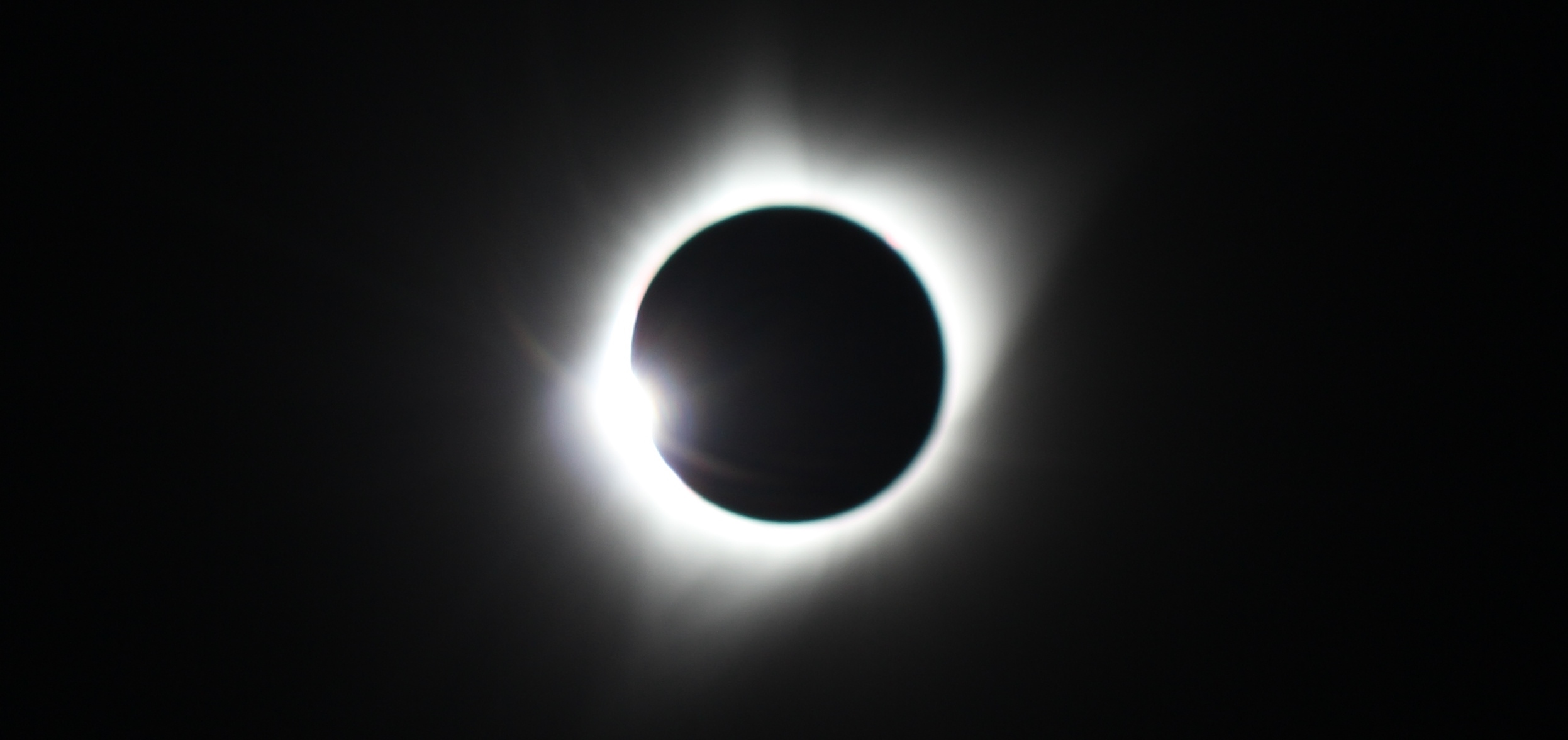
There are two kinds of eclipses. A lunar eclipse in when the Earth casts a shadow on the Moon, making the Moon appear dark. A solar eclipse is when the Moon casts a shadow on the Earth. The people who are in the shadow will the see the Moon block the Sun, making the Sun dark. The picture above is one I tookd during a total solar eclipse.
In my previous post, I said that a full moon is when the Earth is between the Sun and the Moon. And as you might expect, a lunar eclipse can only happen during a full moon. But we get a full moon about once a month, and lunar eclipses only happen about twice a year. Why isn't there a lunar eclipse every month?
The explanation requires some 3D geometry, which can be hard to visualize. So, to help, I've made some interactive 3D models. To start, here's a model showing the Earth's orbit around the sun. You can click and drag to rotate it. Note that it's not to scale to make it easier to see. The grid is just to visualize the plane that the orbit lies on.
The Earth moves around the Sun in a circle, with the Sun at the center. (Technically, it's not actually a circle and the Sun isn't quite at the center, but that's a close enough approximation for now.) That circle lies on a plane, called the ecliptic. The ecliptic doesn't move, at least not significantly.
The Moon orbits the Earth on a circle too, but the plane of the Moon's orbit doesn't line up with the plane of the Earth's orbit. This is called the inclination of the Moon's orbit. You can adjust the slider to see how different inclinations look. The actual inclination of the Moon's orbit is about 5 degrees.
You can see how when the Moon is just slightly inclined, it's possible for it to be on the far side of the Earth, but not in Earth's shadow. But now, you might be wondering, how can there ever be an eclipse?
Well, as the Earth moves around the Sun, the plane of the Moon's orbit changes very little. (A process called nodal precession causes the plane to spin around the Earth, but it happens slowly.) This next model shows what the Moon's orbit looks like as the Earth moves around the Sun.
If you adjust both the Earth's and Moon's positions to 90 degrees, you can see the Moon will be in Earth's shadow no matter its inclination. This is why we get about two lunar eclipses per year.
This model also helps demonstrate why solar eclipses are less common than lunar eclipses. Since the Moon is smaller than the Earth, it has to be that much closer to being perfectly lined up. Furthermore, the Moon's shadow can't cover the entire Earth, so only a small portion of the Earth can see a solar eclipse when it does happen.
Because the above models aren't to scale, they might give the wrong impression about the actual sizes and distances of the solar system. So the next model is the same as the last one, except it's to scale. If you can't see anything, zoom in.


